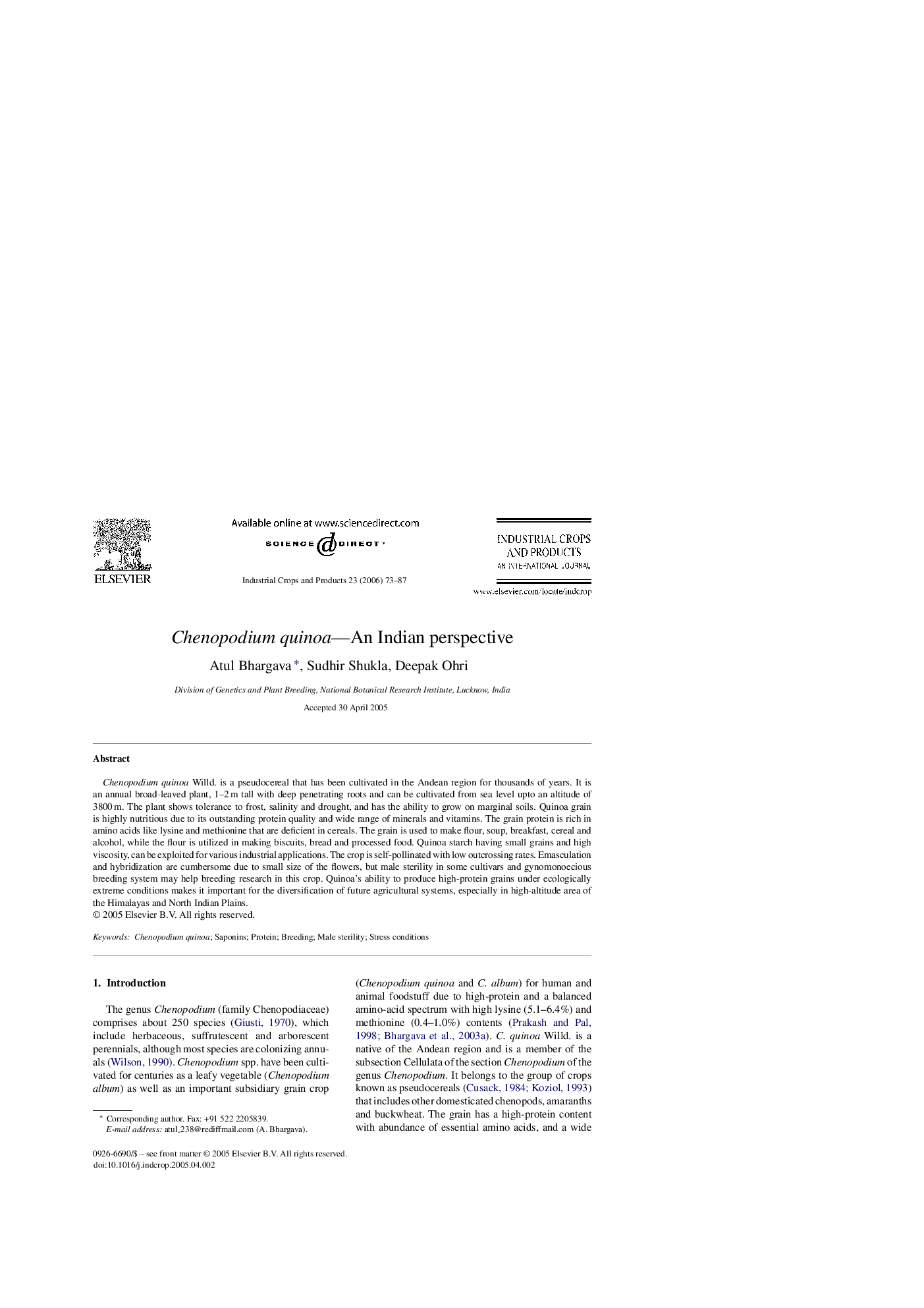| Article ID | Journal | Published Year | Pages | File Type |
|---|---|---|---|---|
| 4515423 | Industrial Crops and Products | 2006 | 15 Pages |
Chenopodium quinoa Willd. is a pseudocereal that has been cultivated in the Andean region for thousands of years. It is an annual broad-leaved plant, 1–2 m tall with deep penetrating roots and can be cultivated from sea level upto an altitude of 3800 m. The plant shows tolerance to frost, salinity and drought, and has the ability to grow on marginal soils. Quinoa grain is highly nutritious due to its outstanding protein quality and wide range of minerals and vitamins. The grain protein is rich in amino acids like lysine and methionine that are deficient in cereals. The grain is used to make flour, soup, breakfast, cereal and alcohol, while the flour is utilized in making biscuits, bread and processed food. Quinoa starch having small grains and high viscosity, can be exploited for various industrial applications. The crop is self-pollinated with low outcrossing rates. Emasculation and hybridization are cumbersome due to small size of the flowers, but male sterility in some cultivars and gynomonoecious breeding system may help breeding research in this crop. Quinoa's ability to produce high-protein grains under ecologically extreme conditions makes it important for the diversification of future agricultural systems, especially in high-altitude area of the Himalayas and North Indian Plains.
